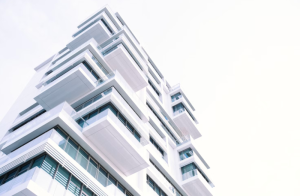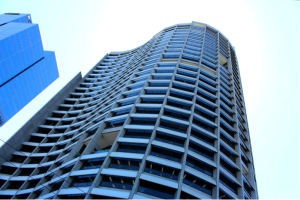In the realm of commercial real estate, where investments can be substantial, making smart construction choices is crucial. As such, one aspect that often plays a pivotal role in maximizing returns for commercial buildings is the strategic selection of building materials. By carefully considering materials that promote fire safety, durability, air quality, energy efficiency, and curb appeal, investors and property owners can enhance the value and functionality of their properties, attracting tenants and increasing overall profitability.
Fire Safety Features

With the growing threat of wildfires in the era of climate change, fire protection has become a top priority for commercial buildings. In addition, because commercial buildings have significantly more wiring, light fixtures, and other moving parts that could possibly lead to a mechanical fire, they require a greater level of protection than a basic single family home.
Therefore, not only will fire safety features help protect the building and its occupants, but many insurance providers will lower premiums for well-protected structures that they view as less of a risk, lowering the ongoing cost of operating the building.
There are a number of effective ways to incorporate fire-resistant materials that can significantly limit the spread of fire and protect both people and property. Options such as sprinkler systems, fire curtains, smoke baffles, and fire resistant roofing materials can provide an additional layer of safety and peace of mind against the spread of fire.
Durable Flooring
Whether it’s an active warehouse loading area or bustling hotel lobby, commercial buildings often experience heavy foot and machine traffic, which can quickly take a toll on flooring. Choosing durable materials such as epoxy terrazzo or polished concrete ensures longevity, minimizes maintenance costs, and enhances the overall appearance of the space. Not only do they come in a wide variety of colors and designs to complement the ambience of any commercial interior, but these flooring options can withstand wear and tear, creating a safe and visually appealing environment for occupants indefinitely.
Air Quality Controls
In the wake of the COVID-19 pandemic, air quality has become a major concern for commercial building owners and occupants. Implementing measures to improve air quality not only promotes health and well-being but can also increase productivity and reduce absenteeism.
With this in mind, there are numerous ways commercial buildings are taking measures to improve the quality of their indoor air.
Backdraft dampers are an effective tool for promoting the correct flow of treated air. Typically installed in the HVAC ducts and paired with an air scrubbing mechanism, backdraft dampers guarantee that clean, conditioned air does not make its way back into the HVAC system.
In addition, new windows are a top priority for improved ventilation. Many outdated windows are difficult to open and close. The frames can also accumulate mold and mildew spores over time, posing a problem for people with allergies. Therefore, modern steel and aluminum frames with double-paned glass are an increasingly popular solution in commercial buildings.
Finally, the use of uvc products for air sanitation can also guarantee the quality of indoor air. These innovative air treatment products effectively kill airborne bacteria commonly found in HVAC ducts, making them a must-have for commercial food facilities.
Light Transmitting Features

Energy efficiency is another key factor in maximizing returns on commercial real estate investments. With tightening government regulations and increasing consumer conscientiousness, energy-guzzling structures will have a hard time attracting tenants in the “green” business climate.
While solar panels and water harvesting techniques are some of the more aggressive means of improving energy efficiency in commercial buildings, leveraging natural light flow is one of the most effective ways to achieve energy savings. Incorporating materials such as glass staircase railings and demountable glass wall partitions allows for natural light to circulate throughout the building’s interior, reducing the need for artificial lighting and lowering utility costs.
Improved Curb Appeal

Curb appeal plays a crucial role in attracting tenants, customers, and potential employees. It creates that all-important first impression on which the business may ultimately be judged.
Enhancing the exterior of a commercial building can be achieved through various means, including the use of architectural louvers, upgraded siding, and decorative screen facades. These elements add aesthetic appeal to the building’s surface-level cladding.
In addition, landscaping and functional exterior spaces, such as patios and rooftop decks adorned with decorative pergolas, can also make the exterior more vibrant and inviting, creating an exciting environment for patrons and boosting the overall value of the property.
Choose the Right Materials and Maximize Your Commercial Building Investment
Selecting the right materials not only enhances the functionality and safety of the building but also attracts tenants, increases occupancy rates, and ultimately drives profitability. With careful planning and a focus on quality materials, commercial real estate investments can yield long-term success and financial rewards. For more ideas on how to make your commercial structure more profitable, check out the resources at SVN Dunn Commercial for the latest in the commercial real estate industry!
Author Bio:
Sam Willis is a freelance writer that loves sharing his knowledge and expertise in residential and commercial real estate, as well as engineering and construction. He lives in Atlanta, Georgia where he enjoys spending time with his wife and researching real estate trends in his free time. Sam’s work as a freelance writer can be found on Building Product Advisor, a new construction industry resource site.

